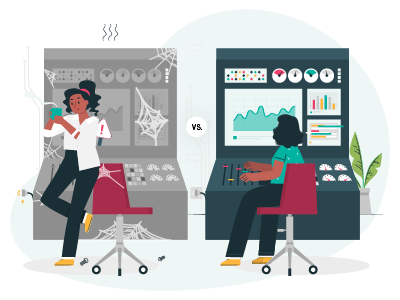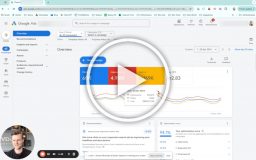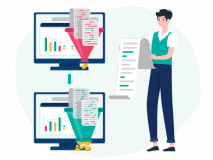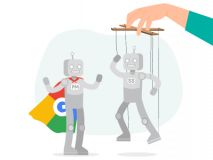Summary
- The Set-and-Forget approach can work for certain scenarios but can hurt your business if you have limited demand.
- Google Ads is simpler than Meta Ads, and the best way to determine the search intent is to target search terms.
- Set-and-Forget folks are not walking the walk; they are using automation as an excuse not to do any work.
- The Analyze-and-Grow approach involves rinsing and repeating three steps: identify bottlenecks, prioritize solutions, and implement.
- Potential solutions include the following:
- Split campaigns, adjust bids, use ad extensions, optimize ad copy, use different ad formats, adjust targeting, and adjust landing pages.
Intro
There is something I haven’t had the ability to express until now. It’s about a pet peeve of mine, and it revolves around the way that many of the incoming accounts I audit are managed and the way people talk about Google Ads management.
It’s about the degree of hands-off that most PPC managers tend to be these days when it comes to managing their accounts.
I’ve been frustrated in the past because what has been misunderstood as a need for control and refusal to accept automation is actually more about just not seeing the opportunities in front of us.
It’s not that I have a need for control, but the way you build a Google Ads account will determine how much insight you get and how you can act on that insight.
A simple example is running all products in one Performance Max campaign vs. splitting them up. You can only set a ROAS target at the campaign level, so if you have a huge inventory, you most likely need to set different ROAS targets sometimes.
Another aspect is that accounts that run on a simple ROAS target without much optimization will hit a performance ceiling. Sometimes that ceiling is high—like during COVID—while at other times, it’s low.
How you work with an account that has hit its ceiling and how you identify whether that’s a glass ceiling (you can break through if you work hard enough) or if it’s the actual maximum is what I’m talking about today.
In this article, we will go through two different types of accounts that I usually see:
- The Set-and-Forget approach
- The Analyze-and-Grow approach
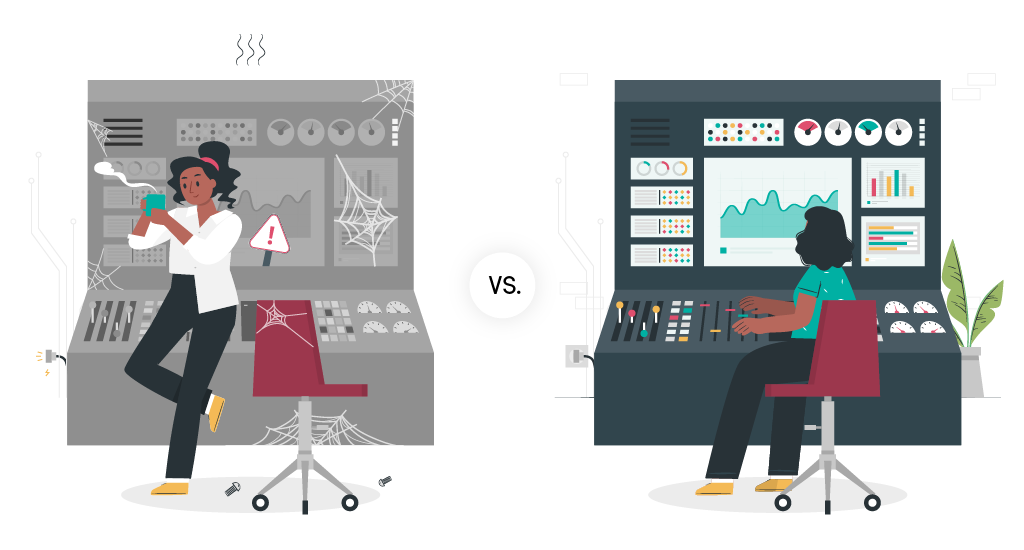
First, let’s define each approach.
Set & Forget vs. Analyze & Grow
- Set and Forget: I compare this to throwing a bunch of pasta at the wall and seeing what sticks. Advertisers will upload all their products, and whatever hits a good ROAS will be permitted to continue running. That’s it.
- Analyze and Grow: In this approach, you take what isn’t profitable and find ways to make it profitable.
Granted, it’s not always possible to make something profitable. One of the core pillars at Savvy is that we only take on cases we believe in.
Sure, sometimes, we get it wrong, but when we know something will not work, then we won’t even try because it will just lead to wasted money and effort, and that’s contagious.
But why is this a problem?
Google Ads Has a Finite Demand.
To best explain why the Set-and-Forget approach can hurt your business, I demonstrate how marketing channels are different.
One of the campaign strategies in Meta Ads that’s working at the moment is to aggregate as much data as possible in a broad targeting campaign (I’m simplifying). This approach has, in some circles, trickled into Google Ads, where Performance Max is being touted as the equivalent, and you should only run one campaign.
I think that’s a mistake for growth businesses.
Compared to Google Ads, Meta Ads offers you a near-infinite ability to scale your campaigns. There are always more people to target. The algorithm is amazing at finding new audiences when you add creative content that hits a new audience.
However, with Google Ads, you are always limited to how many people are actually searching for your product.
So, if an approach adopts a meh attitude, where if a keyword doesn’t convert, then we’ll just find another, you’ll reach a ceiling quick.
Google Ads Targeting Is Simple.
Where Meta Ads targets people based on dozens of user behavior and audience data points, then Google Ads is comparably simple.
A lot of the value from Google Ads comes from the search intent of each user. Even though layering in audiences has become increasingly valuable, audience targeting is not close to being as important for Google Ads as it is for Meta Ads (where it’s everything).
*Most eCommerce advertisers can’t run profitable campaigns on Google Ads by targeting irrelevant keywords combined with a relevant in-market audience.
And that’s the gist of the issue with Google Ads. It’s all about the keyword, and as much as people like to predict that keywords are dead, all search marketing will forever be about the search intent.
Currently, the best way to determine the search intent is to target search terms that have an intent to look for the products we are selling.
It’s not audience-based. Targeting a person in their mid-30s, a technology aficionado who likes tech news sites, will never be as good of a targeting profile as someone directly searching for “Best 50-inch TV 2023.”
*I’ve spoken to several who have made this work, and I have had luck doing so a couple of times. However, compared to how often this approach doesn’t work for anyone but the largest advertisers, I’ll still say that it’s a rarely successful tactic and not a common practice yet.
The inability to scale seriously on the display network compared to paid social is another indication.
Set-&-Forget Folks Are Not Walking the Walk.
One of my oldest sayings regarding Google Ads is the theory of the red thread. This is a Danish term that means that when you say A, you must say B and C, etc. You must follow the red thread.
When someone preaches a 100% automated setup in Google Ads so they can focus on other factors, I applaud them.
I feel there is too little focus on off-platform optimizations, but when I then ask what they’re doing to optimize the creative or off-platform factors, I get answers like the following:
- We’ve uploaded better images.
- We’re working on a video to better target YouTube ads.
- We can’t do landing pages because it’s Google Shopping.
- We’ve added better audience signals.
- We’re writing better ad assets.
Please. Stop…
Uploading Images? Who cares? When was the last time you generated any significant revenue from image ads on the display network? Come on….
Video? How much of your spend is going to video? How come you think your Performance Max campaign will suddenly start hitting your ROAS targets from YouTube ads?
No landing pages? What are you actually doing creatively?
Audience signals have a very little impact after an account is up and running. Audience signals are meant to help the algorithm initially focus the ad spend before there is enough data for it to work.
Better ad assets. Awesome. But you have five asset groups in one Performance Max campaign that target wildly different product categories, so all your assets have to be generic messages.
This is me being incredibly negative, but this is the kind of thing that drives me crazy.
It’s lazy marketers leaning into a trend of automation being more effective (which it is), but they use it as an excuse not to do any work. I see accounts all the time that have rarely been touched, but they perform well enough for everyone to be happy.
That’s good if you are managing these accounts in-house and you’ve hit a performance ceiling, but it’s not good enough if you are trying to grow your business.
That being said, I want to make sure you know that I think the Set-and-Forget approach can work in several scenarios.
When Should You Use Set and Forget?
You might read all this and think, “Geez, Andrew, you’re basically just pitching Savvy.” Yes, what we do primarily is the Analyze-and-Grow method, but that’s because it’s what we get paid to do, and the client we take on fits that method.
There are plenty of reasons to use the Set-and-Forget strategy:
- When you’re starting out (you want your ads to be stable and profitable).
- When your business is in maintenance mode.
- When Google Ads is not a priority, and squeezing every dollar out of it doesn’t make sense.
- When you are disappointed with agencies not delivering.
- When you’ve reached your potential (which is not that high for some businesses).
- When testing bottleneck solutions, which results in loss of revenue.
All are valid reasons to stick with the Set-and-Forget approach, which has done exceptionally well for numerous companies.
Where I get my panties in a bunch is when growth agencies pitch the Set-and-Forget model to high-growth eCommerce businesses, who then think they’ve reached their maximum potential.
What Does Analyze and Grow Actually Mean?
I pretty much made up the term, but the idea is that you will rinse and repeat the following three steps:
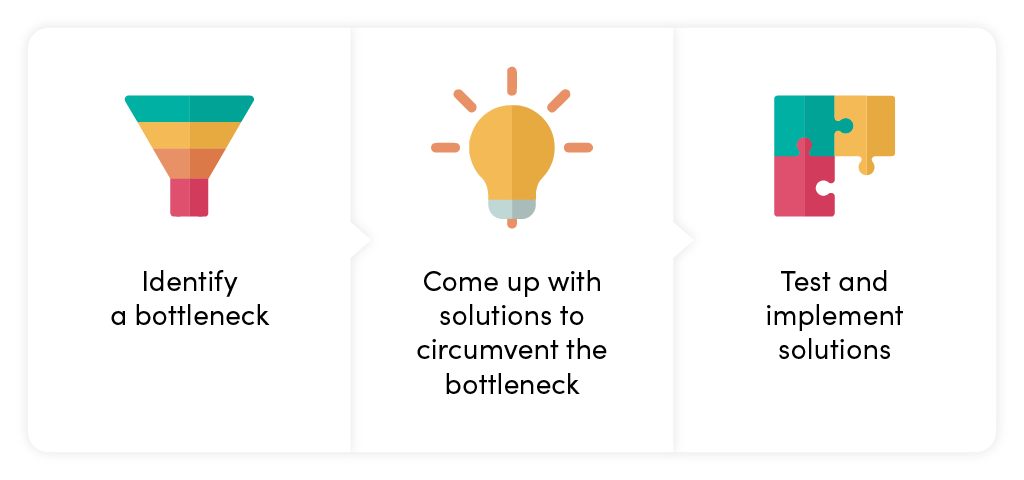
- Identify a bottleneck.
- Come up with solutions to circumvent the bottleneck.
- Test and implement the solutions.
Now, the bottlenecks and solutions that you find can vary greatly from account to account, but to give you an idea of what I mean, here is an initial list:
- Identify core keywords with a low impression share.
- Implement better data collection to enable Smart Bidding to do better work.
- Constantly identify better assets for Responsive Search Ads.
- Restructure campaigns to fit account strategies and business insights.
- Prioritize Shopping products to help Smart Bidding proactively with what product will convert the best.
- Override Smart Bidding when insights call for it (e.g., big sales).
- Perform routine optimizations.
- Implement micro conversions to provide more data.
- Adjust ROAS targets.
- Work with various ROAS targets.
- Proactively push spend in peak season.
- Boost dormant products.
- Create product onboarding campaigns with separate bidding strategies.
- Treat private label products separately.
- Implement landing page testing.
And many more.
Conclusion
The Set-and-Forget approach to Google Ads management can be beneficial to some companies, especially those with simpler, more straightforward campaigns.
However, for companies with higher growth potential, the Analyze-and-Grow approach is more suitable.
The Analyze-and-Grow approach involves continuously analyzing the account, identifying bottlenecks, and finding solutions to improve the performance of the campaign.
It requires a more hands-on approach, but it can lead to better performance and a higher ROI.
Companies should choose the approach that best suits their goals and budgets. By understanding the differences between the two approaches, businesses can make informed decisions that will help them maximize their Google Ads campaigns and achieve their desired performance goals.
